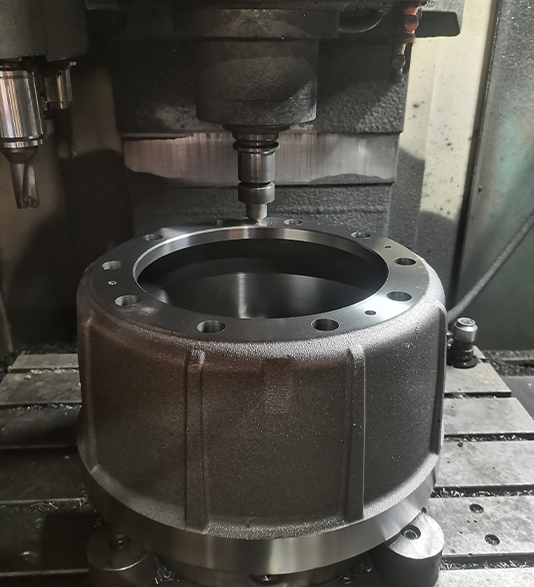Nov . 15, 2024 03:28 Back to list
brake drum actuator
Understanding Brake Drum Actuators Functionality and Importance
Brake systems are integral to the safety and performance of vehicles, and one of the key components that play a crucial role in these systems is the brake drum actuator. This device is essential for the effective functioning of drum brakes, which are still widely used in many vehicles, particularly in heavier models and those designed for towing. In this article, we will explore what brake drum actuators are, how they function, and their importance in modern automotive engineering.
What is a Brake Drum Actuator?
A brake drum actuator is a device that converts mechanical or hydraulic energy into the force needed to engage the braking system. This actuator is commonly found in vehicles equipped with drum brakes, where it is responsible for pressing the brake shoes against the inner surface of the drum to create friction and slow down or stop the vehicle. There are generally two types of actuators used in drum brake systems hydraulic and pneumatic.
Hydraulic actuators utilize fluid pressure to operate, taking advantage of the hydraulic principle that allows a small force to create a larger force when the fluid is confined within a chamber. Pneumatic actuators, on the other hand, use compressed air to achieve the same goal. Both types of actuators serve the primary purpose of providing sufficient force to ensure effective braking performance.
How Does a Brake Drum Actuator Work?
The operation of a brake drum actuator begins when the driver presses the brake pedal. This action triggers a mechanism that either generates hydraulic pressure (in hydraulic systems) or releases compressed air (in pneumatic systems). The resulting pressure- or air-driven force is transmitted to the actuator.
In hydraulic systems, the fluid travels through pipes to the actuator, which is connected to the brake shoes. The actuator then pushes the brake shoes outward, making contact with the drum. This contact creates friction, which is the force that slows down the wheels. Once the brake pedal is released, the actuator retracts the brake shoes away from the drum, allowing the wheels to spin freely again.
brake drum actuator

In pneumatic systems, the workflow is similar but relies on air pressure rather than fluid. The application of air increases the pressure in the actuator, causing the brake shoes to press against the drum, engaging the brake.
Importance of Brake Drum Actuators
1. Safety The primary function of brake drum actuators is to ensure that vehicles can stop effectively. A malfunctioning actuator can lead to brake failure, which poses a significant risk to both the driver and others on the road. Regular maintenance and checks of the brake system, including the actuator, are essential for ensuring safety.
2. Performance An efficient actuator contributes to the overall performance of a vehicle’s braking system. This is particularly important in heavy-duty vehicles that rely on drum brakes for stopping power. When the actuator performs optimally, it allows for smoother and more controlled stops, which is crucial in various driving conditions.
3. Durability Brake drum actuators are designed to withstand the rigorous demands of braking. Their construction often features robust materials that can endure high temperatures and friction. Understanding the materials and design choices can help in selecting the right actuator for specific applications, whether for commercial or personal vehicles.
4. Technological Advancements With advancements in automotive technology, brake drum actuators have evolved to include more sophisticated features, such as anti-lock braking systems (ABS) and electronic brake-force distribution (EBD). These improvements enhance safety and performance by providing more precise control over braking forces.
Conclusion
In summary, brake drum actuators are vital components of drum brake systems, playing a significant role in vehicle safety and performance. Whether hydraulic or pneumatic, these actuators are responsible for converting energy into the braking force needed to slow or stop a vehicle effectively. Understanding their functionality and importance highlights the need for regular maintenance and the advancements that continue to improve automotive braking technologies. As vehicles evolve, so too will the components that make them safe and efficient, ensuring that the braking systems remain reliable for all drivers.
-
Scania Brake Drums: OEM Quality for Optimal Safety & Durability
NewsAug.16,2025
-
R.V.I: Advanced Remote Visual Inspection for Precision
NewsAug.15,2025
-
Discover HYUNDA: Innovative Vehicles, Equipment & Solutions
NewsAug.14,2025
-
R.V.I: Unlock Advanced Insights & Real-time Performance
NewsAug.13,2025
-
Kamaz Brake Drum: Durable & Reliable for Heavy Duty Trucks
NewsAug.12,2025
-
Heavy Duty Iveco Brake Drum - Premium Quality & Safety
NewsAug.11,2025
